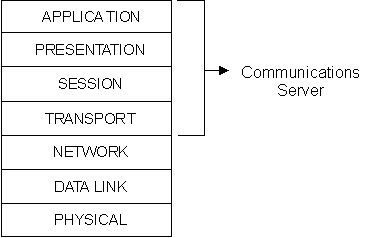This chapter describes Ingres Net and its many benefits in establishing and maintaining Ingres communications. It also explains the role that various connectivity components play in establishing communications with a remote DBMS server. This chapter also introduces Ingres connectivity concepts used in this guide. Lastly, it describes the types of Ingres users and the connectivity-related tasks that each performs.
Ingres Net is a server process that allows you to work on one Ingres instance and access databases on another instance. Both instances can reside on the same machine or they can reside on different machines. For example, with Ingres Net on each instance in your network, you can access Ingres databases on remote nodes as well as on your own local node. Similarly, with Ingres Net in a cluster, you can access Ingres databases on any node in the cluster.
Ingres Net connects multiple computer architectures, operating systems, and network protocols. This capability broadens the range and number of machines that can offer solutions to problems requiring Ingres-based distributed processing. Ingres Net automatically handles all low-level details of data format conversion required in such heterogeneous environments.
Ingres Net is implemented on industry-standard networking protocols. It is designed to be independent of underlying communications hardware and networking software. Subject to the appropriate security checks, Ingres Net lets you treat any remote database as a local database.
Ingres Net works with the basic Ingres components to enable connectivity between client and server instances. It also uses the General Communication Facility to manage communication among various components of Ingres.
The General Communication Facility (GCF) manages communication among all the components of Ingres. The GCF consists of five parts:
As the main server process of Ingres Net, the Communications Server (iigcc), also referred to as the Net Server, provides access to standard network protocols. It is modeled on the top four layers of the network layering structure and communication protocols known as the Open Systems Interconnection (OSI) standards. These standards are specified by the International Standards Organization (ISO). The following figure displays these layers.

Ingres Net supports the Ingres security system; users can access only the data for which they are authorized. For additional information on the security system, see the "Ensuring Access Security" chapter in the Database Administrator Guide.
With one exception, any installation configuration in which the client and server processes do not reside on the same machine or in the same instance must use Ingres Net.
The exception occurs when Ingres is configured in the cluster mode on nodes that are part of a cluster. In this case, the processes can reside on separate machines without using Net. If Ingres is configured in its normal (rather than cluster) mode on a node that is part of a cluster, Ingres Net is required to connect client and server processes on separate nodes.
For example, an Ingres 4GL client application using Net accesses a remote DBMS server. In this configuration, the Java application does not use Ingres Net because the DAS is local to the DBMS Server. If the DAS is remote to the DBMS Server, Ingres Net is required to enable the client/server connection.